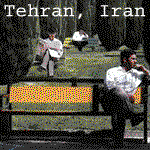African-American Muslims
 The Slavery Years
The Slavery Years(1517-1865)
Introduction
It was a reminder of a remarkable book that I read several years ago called, “Roots,” by Alex Haley and the fact he wrote that his family when they where in Africa where Muslim and over time apparently in America, they eventually became Christian and myself being Muslim and having had some people try to force me to Christianity, of the possibility that the same happened in history, before me.
Islamphobia as it is coined since 9/11 was a situation that had it roots, long before and this is a historical fact with numerous writings and verbal narratives passed from generation to generation among families who have been subjected to this situation.
Below is a small portion of the early history of Islam in America and one large group of people (Estimated in 1860, as nearly 4 million) in American history subjected to these pressures through slavery. It has been questioned numerous times over the years, if the enforcement of Christianity in America is just another way to Americanize and destroy the beauty and identity of people; who have came from other parts of the globe.
Muslims have been part of the American landscape since pre-Columbus times. Indeed, early explorers used maps that were derived from the work of Muslims, with their advanced geographical and navigational information of the time.
 It is known among many Islamic scholars that about 90 percent of the slaves brought from Africa were Muslims. The film Amistad recognized this fact, portraying Muslims aboard this slave vessel, trying to perform their prayers while chained together on deck as they crossed the Atlantic. Below are four examples of personal stories that have been passed down:
It is known among many Islamic scholars that about 90 percent of the slaves brought from Africa were Muslims. The film Amistad recognized this fact, portraying Muslims aboard this slave vessel, trying to perform their prayers while chained together on deck as they crossed the Atlantic. Below are four examples of personal stories that have been passed down:Omar Ibn Said (ca. 1770-1864) was born in the Muslim state of Futa Toro in Western Africa, in present-day Senegal. He was a Muslim scholar and trader who was captured and enslaved. He arrived in South Carolina in 1807, and was sold to James Owen of North Carolina.
Sali-Bul Ali was a slave on a plantation. His owner James Cooper wrote: "He is a strict Mahometan; abstains from spirituous liquors, and keeps various fasts, particularly that of the Ramadan..."
Lamen Kebe was a slave who used to be a school teacher in Africa. He shared information about the texts and teaching methods used in the Islamic schools of his country.
Abdul Rahman Ibrahim Sori spent 40 years in slavery before he returned to Africa to die. He wrote two autobiographies, and signed a charcoal sketch of himself by Henry Inman, which was featured on the cover of "Freedman's Journal" and is on display in the Library of Congress.
Many of the Muslim slaves were encouraged or forced to convert to Christianity.
 Many of the first-generation slaves retained much of their Muslim identity, but in the slave conditions at the time, this identity was largely lost in some cases among their descendants.
Many of the first-generation slaves retained much of their Muslim identity, but in the slave conditions at the time, this identity was largely lost in some cases among their descendants. Labels: Anti-Semitism, Christianity, Evangelism, History, Human Rights, Islam, Islamophobia, Murder, Native Americans, Oppression, Racism, Religious Persecution, Slave Trade, Torture, United States














0 Comments:
Post a Comment
<< Home